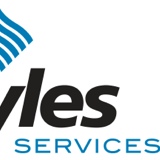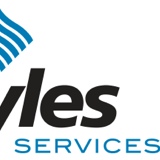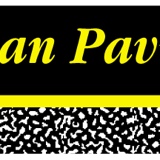Information
-
Operating Company:
-
Document No.
-
Job Name / Number:
-
Conducted on
-
Prepared by:
-
Location
Postings/Notices/Signage/Bulletins
-
1.1 EEO, State/Federal Postings Visible To Employees,Medical Facilities Available And Posted, Emergency Action Plan, Medical Facilities Available And Posted
-
1.2 IIPP On Site, Material Safety Data Sheets (MSDS) Available
-
1.3 Office First-Aid Station Available/Stocked, Office Fire Extinguisher(s) Available and Up To Date
Housekeeping/Material Storage/Chemical Storage/Sanitation
-
2.1 Chemical/Fuel Storage (Gasoline, Diesel, Combustibles stored in Metal Safety Cans), Oxygen/Acetylene Stored Properly (Upright and Secured/20 Feet apart or 30 minute Fire Barrier In Place<br>
-
2.2 Lumber/Material Storage/Properly Stacked, Scrap Material Free Of Nails/Hazardous Protrusions Or Properly Stockpiled/Barricaded/Caution Taped
-
2.3 Access Passageways/Ladders Clear Of Debris, Walkways/Work Areas Clear Of Debris
-
2.4 Covered Trash Receptacles Available For General Debris/Non-Hazardous Material
-
2.5 Loose/Light Material Secured Against Displacement From Wind/Unprotected Edges/Overhead Locations
-
2.6 Appropriate Number of Toilets For Number Of Employees (1 per 20 Employees or Fraction Thereof of Each Sex)
-
2.7 Wash Station Available For Each Toilet Facility (Wash Station Located Outside or Separate From Toilet Facility)
3. Ladders/Ramps/Work Area Access
-
3.1 Job-Built Ladders Properly Constructed (15"-20" Wide Max. For Single Cleat, Rungs Not More Than 12" Top To Top)
-
3.2 Ladders Properly Positioned/Secured At 4:1 Ratio (1` From Wall For Every 4` in Elevation), Ladder Extends Minimum 3` Above Landing
-
3.3 Step Ladders Used Only with Legs Fully Extended (Not To Be Used As Single Ladder)
-
3.4 Manufactured Ladders In Serviceable Condition Or Tagged And Removed From Service
-
3.5 Ramps Properly Constructed/Maintained (Not Less Than 20" Wide, Supported To Avoid Springing Action)
-
3.6 Securely Fastened Cleats For Ramps Sloped 2' in 10' Or More To Improve Footing
4. Personal Protective Equipment
-
4.1 All Employees Wearing Proper Protective Eye Wear For Task Performed (Safety Eyewear Required)
-
4.2 All Employees Wearing Hard Hats (Hard Hats Required)
-
4.3 All Employees Wearing Minimum Class II High Visibility Clothing (Or Site Specific High Vis Clothing)
-
4.4 Hearing Protection As Required
-
4.5 Appropriate Footwear, Steel-Toe Shoe or Toe-Caps/Metatarsal Guards (When Using Impact Equipment i.e. Jackhammer, Compaction Equipment)
-
4.6 Gloves/Appropriate Hand Protection For Assigned Task
-
4.7 Proper Respiratory Protection As Required (Use, Care, Cleaning)
5. Fall Protection/Standard Guardrails
-
5.1 Full Body Harnesses Properly Fitted/Lanyards/Positioning Devices (Use, Condition, Daily Inspection)
-
5.2 Fall Protection Devices (Retractable Lifelines, Horizontal Lifelines, Connecting Devices) In Serviceable Condition
-
5.3 Proper Anchor Points In Use (Support 5000 lb. Per Person Attached w/Lanyard, Support 3000 lb. For Retractable Lifeline)
-
5.4 Proper Connecting Devices In Use/In Serviceable Condition (D-Rings, Straps, Concrete Anchors, Wood Anchors)
-
5.5 Standard Guardrails Installed At All Walking/Working Locations Over 6` High
-
5.6 Uprights, Top and Mid-Rails Properly Installed (Uprights Spaced 8' Max, Top Rail Between 42"-45" From Floor/Platform/Ramp, Mid-Rail Half Way In Between)
-
5.7 Toe-Boards Properly Installed Over Walking/Working Areas Below Elevated Locations
6. Excavations
-
6.1 Pot-Hole Protocol Utilized Prior To Opening New Excavation
-
6.2 Excavations Sloped/Benched/Shored Properly
-
6.3 All Trenches, Boxes, Shields/Excavations Inspected/Documented By Competent Person Prior To Entry By Employees
-
6.4 Excavations Over 20' Designed/Stamped By Registered Engineer
-
6.5 Ladder Access Within 25' Of Employees In Trenches Over 4` Deep
-
6.6 Trenches/Excavations/Shafts/Drill Holes/Pits Properly Barricaded/Covered/Protected As Needed
-
6.7 Spoils/Tools/Equipment Properly Placed Not Less Than 2` From Top Edge Of Excavation
-
6.8 Air Sampling Performed In All Excavations Greater Than 4` Deep Where Hazardous Atmospheres May Exist (Landfills, Waste Treatment Plants, Etc.)
-
6.9 Above-Ground/Sub-Surface Installations Protected, Supported Or Removed
-
6.10 Walkways/Bridges w/Standard Guardrails Installed Where Employees Must Cross Excavations Over 6` Deep and 30" Wide
7. Scaffolds
-
7.1 Scaffold Systems Installed/Inspected by Competent Person
-
7.2 Only Scaffold Grade Plank Utilized, Minimum 20" Walkway Provided,
-
7.3 Standard Guardrails In Place, Walkway, Ladder or Other Safe Means Provided For Access To Scaffold
-
7.4 Planks Shall Not Extend Less than 6" No More Than 18" Beyond Support Member
-
7.5 Scaffold Ends Shut Off With Standard Guardrails (Unless Utilized For Proper Access)
8. Hoisting and Lifting Equipment
-
8.1 Cranes/Boom Trucks Documented Daily Inspection Complete
-
8.2 Cranes/Boom Trucks Properly Set Up (Outriggers, Crane Pads/Mats, Swing Radius)
-
8.3 Rigging/Hardware Inspected By Competent Person
-
8.4 All Rigging/Crane Signaling Performed By Qualified Riggers/Signal Persons
-
8.5 Softeners Used As Needed For Sharp Edges
-
8.6 All Rigging Properly Marked With Capacity Information, Etc., Rigging Not In Use Properly Stored, Unserviceable Rigging Tagged Or Destroyed<br>
-
8.7 Overhead Power Lines Identified/Marked
-
8.8 Tag Lines In Use Where Required
9. Material Handling Equipment/Powered Industrial Trucks
-
9.1 Back-Up Alarms Operational
-
9.2 Seat Belts In Serviceable Condition, Seat Belts In Use
-
9.3 Bucket/Attachment Pins Attached/In Use
-
9.4 Equipment Attachments In Serviceable Condition
-
9.5 Equipment Operators Are Qualified/Certified
-
9.6. Haul Roads Maintained, Properly Marked
10. Tools And Equipment
-
10.1 Hand Tools Maintained In Safe Condition (Striking Surfaces, Handles, etc.)
-
10.2 Power Tools Maintained In Safe Condition (Electrical Cord, Safety Guards, Handles, etc.)
-
10.3 Pneumatic Tools Maintained In Safe Condition (Air Hose Connections, Safety Devices, etc.)
-
10.4 Gas Powered Tools Maintained In Safe Condition (Guards, Handles, etc.)
-
10.5 Powder Actuated Tools Maintained In Safe Condition (Guards, Handles, Loads Safely Stored)
-
10.6 Gas Operated Tools Maintained In Safe Condition (Paslode Nail Gun)
-
10.7 Specialty Tools (Falsework Jacks, Plates, etc.)
11. Electrical
-
11.1 Extension Cords Maintained In Safe Condition (Grounding Pins, Insulation, etc.)
-
11.2 Cords Protected Against Vehicular/Equipment Traffic
-
11.3 Ground Fault Circuit Interruptors (GFCI) Working
-
11.4 Junction Boxes Maintained In Safe Condition
12. Welding/Cutting/Fire Protection
-
12.1 Welding Leads/Torch Hoses Maintained In Safe Condition, Back Flow Preventers Installed On Torch Setups
-
12.2 Combustibles/Flammables Stored Away From Hot Work
-
12.3 Regulators/Gauges Properly Installed/Maintained
-
12.4 Fire Extinguishers/Water Cans Located Near Hot Work
-
12.5 Fire Extinguishers Up To Date/Properly Maintained
13. Traffic Control
-
13.1 Safe Pedestrian Access Provided
-
13.2 Construction Area Signs Properly Maintained
-
13.3 Temporary Traffic Control/Flaggers/Flagger Stations Properly Set Up/Maintained
-
13.4 Safe Construction Area Access Provided
-
13.5 Crash Cushions/Reflectors Properly Maintained
-
Corrective Actions / Summary
-
Project Supervision:
-
Safety Specialist:









